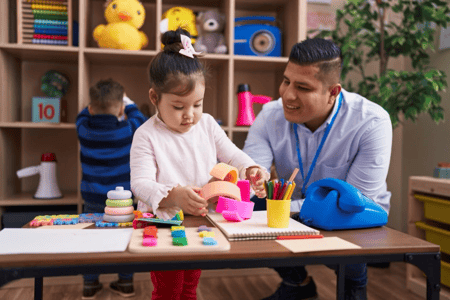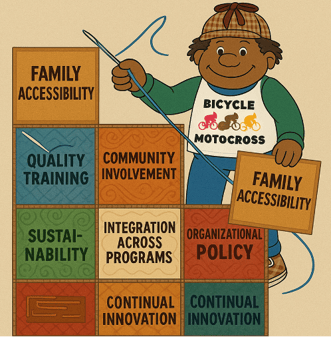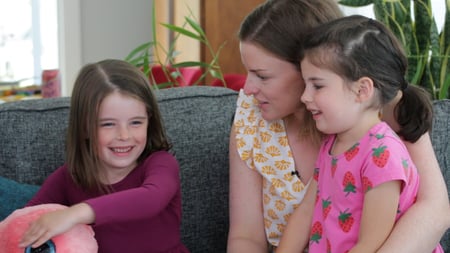How the Well-Baby Program Supports Healthy Child Development

Check out our blog for social-emotional learning articles, news, and more!
by Carolyn Webster-Stratton, Ph.D.
Prior to the Covid pandemic, about one in five children have struggled with feelings of fear, hopelessness, and sadness at some time during their development. When children feel anxious, their brains are flooded with feelings of danger or future threat. These powerful feelings and anxious thoughts can lead to emotional dysregulation with physical and behavioral outcomes such as:
Sometimes these symptoms that involve children’s thoughts and feelings are called internalizing disorders. For many children these fears or worries won’t last. However, when the symptoms are intense or persist longer than 1-2 months, they can interfere with the child’s ability to attend school, to be away from parents, to focus and concentrate, to get adequate sleep, or to make friends and engage in social activities.
Although our understanding of the impact of the pandemic on children is still evolving, it seems that despite the uncertainty and challenges of Covid, 60-70% of children have been remarkedly resilient, emotionally regulated, and able to cope with the uncertainty and ongoing stress. On the other hand, since the pandemic, there has been an upsurge in reported rates of child anxiety and internalizing symptoms. Current estimates show as many as 30-40% of children and adolescents are experiencing anxiety, depression, or stress. Certain groups are more at risk for anxiety disorders and are more vulnerable to the added impact of the pandemic: those living in poverty, those with unstable housing, and those with a prior history of developmental delays or mental health issues regardless of their socioeconomic background. How can we help these at-risk children and promote their “protective factors”, their strengths and resilience?
IY Program Developer Carolyn Webster-Stratton, Ph.D. has written a new article with lots of tips to help parents help their children who are anxious. Here are some examples:
Do accept and validate your child’s fears and worries and help them learn how to manage them. When your child expresses uncomfortable feelings, such as fear and worry, name these feelings and what the experience is that may be causing them. “You are sad and scared because your granny is sick. Is that right?” This validation shows acceptance. It is nonjudgmental and helps your child feel understood. Combine your validation of their feeling with gentle suggestions for a coping statement that helps them face their fears. This approach assures your support and understanding of the child’s fears and shows your belief that your child can manage the situation and the feelings. For example, saying, “Maybe we can draw a picture for her that will help her know we love her. This will make her happy.” Or, “I see you are afraid to ask your friend to play (validate), let’s practice what you can say (coping)?”
Do use positive forecasting. Predict for your child that things will be eventually get better. “I can see you are afraid to go back to school, but your friends will be so happy to see you. What might you tell them when you see them?” Or, “You look worried and lonely, but soon you will be playing soccer and will have fun.” It is important to note that positive forecasting is showing your child a possible positive outcome, but still allows your child to have their unhappy feelings in the moment.
Do help your child to be aware of their positive and comfortable feelings. When your child is acting in ways that are not fearful, give attention to these positive emotions and link the positive emotion to the child’s particular experience. For example, saying, “You look happy when you are playing a game with your friend.” Or, “You are so patient figuring out how to put that puzzle together. You are staying calm and trying another idea. I think you will solve that puzzle problem.” Or, “You seem relaxed reading that book.” “You are brave to try that high slide!” The goal is to focus on and give attention to your child’s positive emotion feeling states such as being happy, patient, calm, confident, brave, or persistent with a difficult task. Children learn to recognize and express these comfortable feelings in themselves. Then they can use them in their own positive self-talk as well as in communication with others. They recognize that they are not always fearful, angry, or anxious and remember the situations that lead to more comfortable feelings.
Do use puppets to enhance young children’s learning of self-regulation strategies. Children love pretend play and can learn well using imaginary situations. Pretend play helps them understand what others, including a puppet, might feel. Your child can practice emotional self-regulation strategies to help the puppet calm down, and then when your child is upset, your puppet could prompt your child to use the same strategies. Your child may be more responsive to the puppet’s coaching than to your parent voice.
You can use puppets to promote your child’s practice of self-regulation calming thoughts and memories, feeling talk, and breathing methods. You can tailor the puppets’ experiences to situations that are real for your child. For example, your puppet could be stressed at school, afraid to talk about making a mistake, nervous about meeting new people, or having a vaccination. Your child will likely show empathy for the puppet’s feelings. The puppets can ask your child for ideas to respond to each of these situations. You can prompt your child to show the puppet what to do to calm down and feel better. This helps children to normalize their own anxious thoughts and feelings around a stressful event and opens up further possibility of your child feeling safe to talk about their own fears and worries with others.
See all of Carolyn Webster-Stratton’s tips for how parents can help their children who are anxious in her new article: How Parents Can Build Emotional Resilience in Young Children (3-8 years) Who are Anxious – The Do’s and Don’ts





